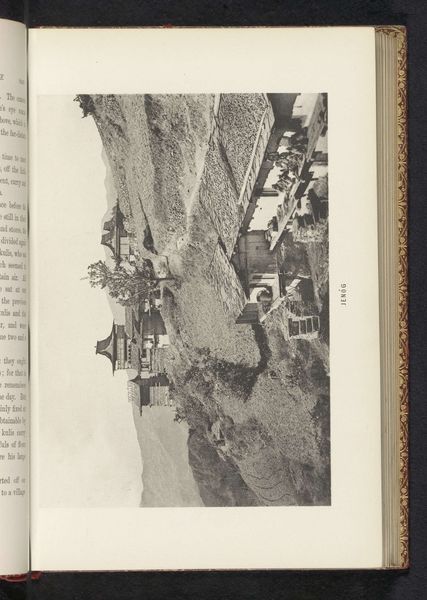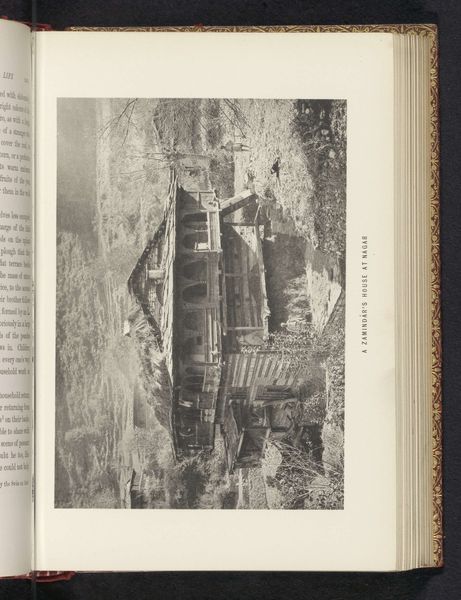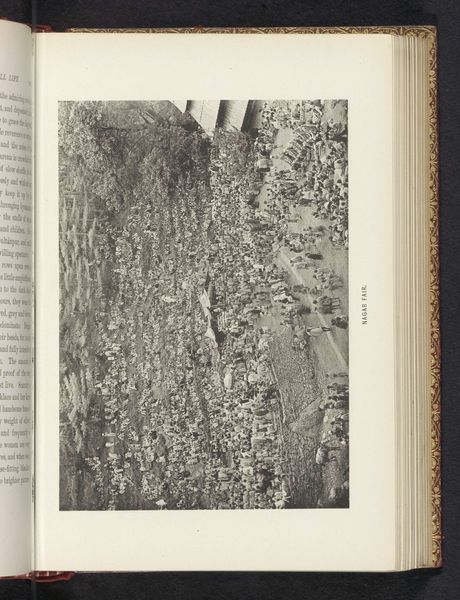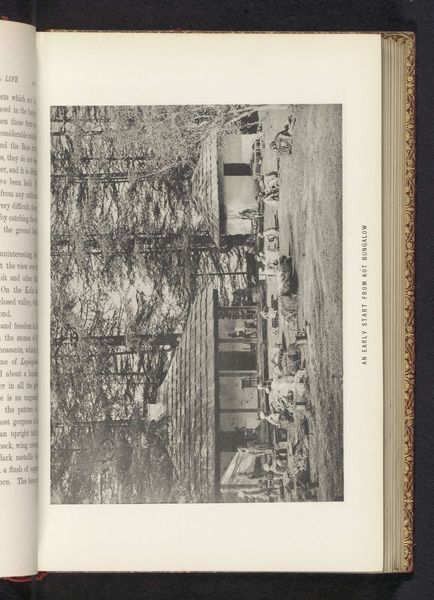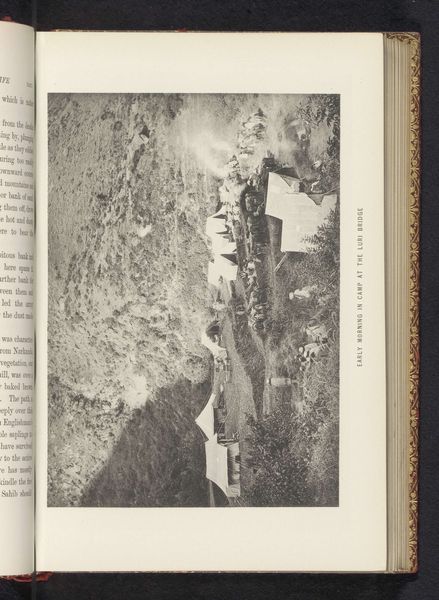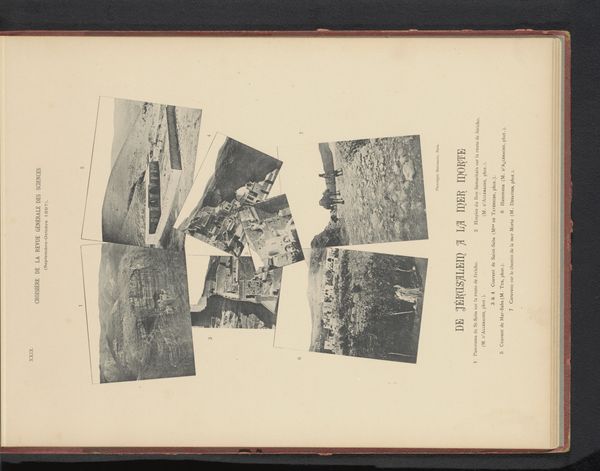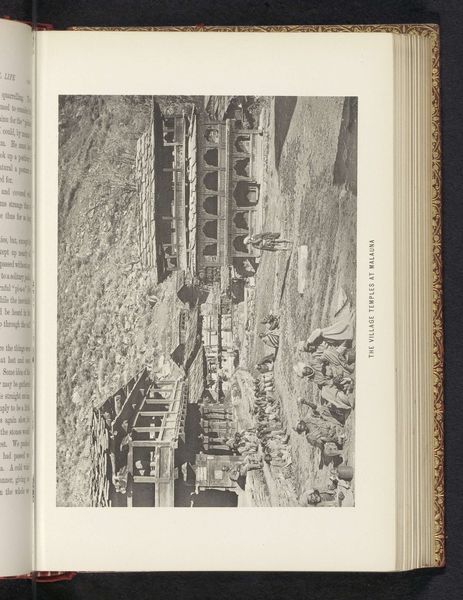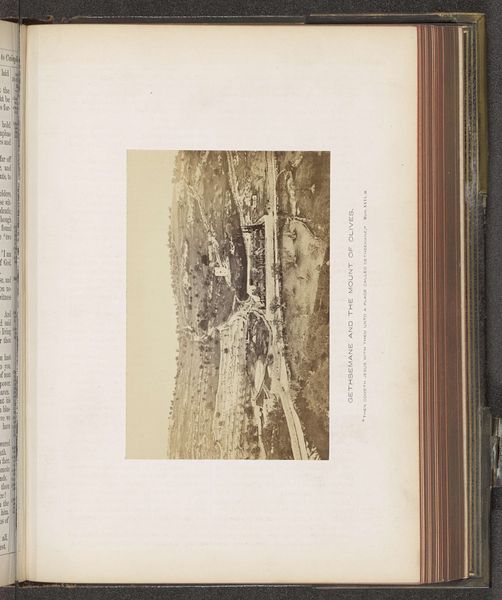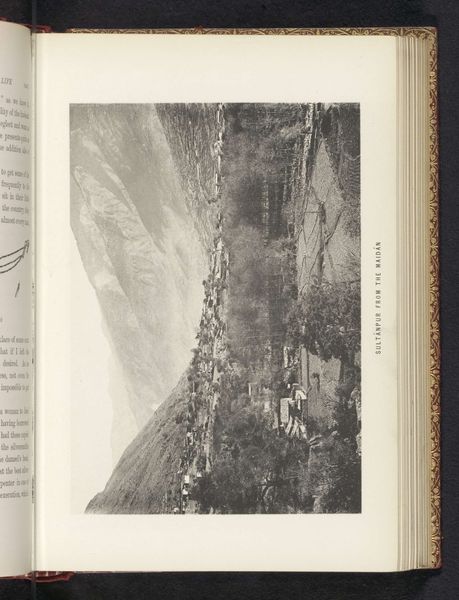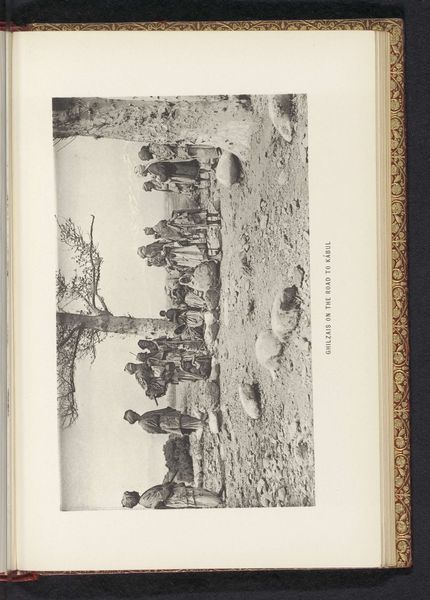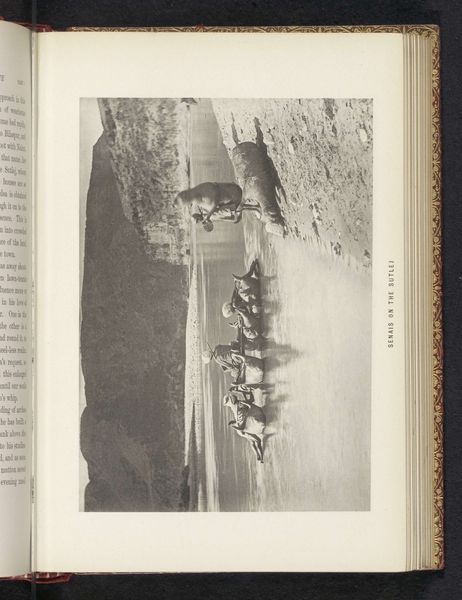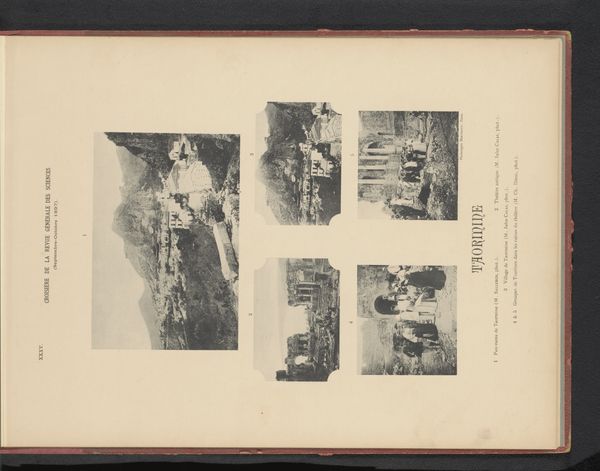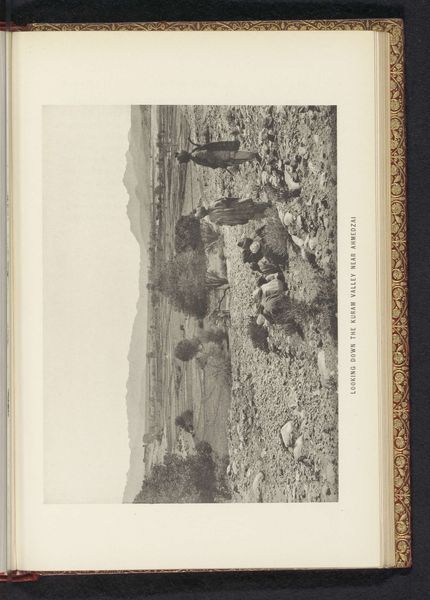
print, photography, gelatin-silver-print
# print
#
landscape
#
photography
#
coloured pencil
#
gelatin-silver-print
#
realism
Dimensions: height 118 mm, width 168 mm
Copyright: Rijks Museum: Open Domain
Curator: Here we have Frederick Saint John Gore's "Cricket at Manikarn," a gelatin-silver print that predates 1895. My immediate impression is its surprising contrast, capturing both the roughness of the terrain and the leisure activity. Editor: The juxtaposition of this almost desolate landscape, punctuated by figures playing cricket, is compelling. Look closely at the layering—how the figures seem placed *within* the environment more than *on* it. It invites considerations of materiality, both what makes the artwork, the medium, and what is in the scene, how the structures have been made and constructed from the stones on the land. Curator: Indeed, this visual stratification is deliberate, structuring depth through the interplay of light and shadow. Notice how the monochromatic palette actually enhances the composition. Gore draws out texture across stone and clothing alike through silver salts. It becomes less a snapshot, more a structured study in contrasts. Editor: I see it less as detached observation and more as an almost anthropological record—or perhaps even performance. Who are these people in relationship to that space? The placement of each figure within this environment suggests intentional orchestration. Also, who did the labour of creating the scene, as opposed to who just looks at it as recreation? Curator: But isn't the material itself—this particular photographic print—indicative of the prevailing artistic sentiment? He seeks not simply to replicate a scene but to imbue it with a sense of structured realism. Its textures evoke depth and also suggest flatness in their application upon the printing page. Editor: Maybe, but also consider how its widespread reproduction affects accessibility. Is the availability of a visual so critical in building a social dialogue, where an almost fantastical sporting activity becomes documented, distributed, then potentially performed elsewhere because of access? Curator: I can see how this image becomes part of a cycle—depiction enabling reenactment. But for me, it's primarily about the formalism here; about a series of careful relationships played out in monochromatic values. Editor: Ultimately, perhaps it’s this conversation—between the structural intention of an artwork’s creation and social impact through reproduction—which enriches this otherwise quite unassuming image.
Comments
No comments
Be the first to comment and join the conversation on the ultimate creative platform.
